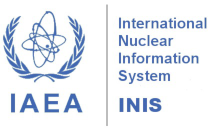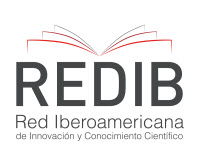Detection of Cosmic Radiation at Low Doses: Integrative Review of Biodosimetric Methodologies with Proposition of Aerospace Evaluation Index
DOI:
https://doi.org/10.15392/2319-0612.2025.2934Palavras-chave:
space biodosimetry, cosmic radiation, biodosimetric indexResumo
Galactic cosmic radiation (GCR) is the major risk in long-duration spaceflight when considering biological damage. Hence, monitoring the absorbed dose is required and biodosimetry will be considered an important tool especially in scenarios where physical dosimetry does not work. This integrative review tries to find, analyze, and compare different biodosimetric techniques capable of recording low doses of ionizing radiation (≤ 0.1 Gy) under simulation of spatial environments with respect to their operational applicability. The Aerospace Biodosimetric Performance Index is introduced to integrate the main parameters of the analysis. All results came from original articles in English available in open access published between 2019 and 2024 according to a PRISMA 2020 flowchart found in Scopus and PubMed databases and only eight studies were considered eligible for inclusion after performing a primary screening using Rayyan app. The major biodosimetric approaches recognized in the investigation are cytogenetic, molecular, and metabolic. The analysis time in the methodologies was between 2 and 70 hours, sample viability from 1 day to 2 years, and sensitivity as low as 0.05 Gy for the minimum detectable dose in some methods. The Yeast Metabolic Assay showed good applicability by combining high sensitivity with quick analysis and long viability. However, an absence of studies combining space radiation with microgravity constituted a major drawback. While many methodologies show detection capabilities at very low dose levels, few of them meet both the technical and operational requirements when considered together for prolonged space missions, hence a development challenge for hybridized yet more robust methods.
Downloads
Referências
[1] A. Bushmanov, N. Vorobyeva, D. Molodtsova, and A. N. Osipov, ‘Utilization of DNA double-strand breaks for biodosimetry of ionizing radiation exposure’, Environmental Advances, vol. 8, Jul. 2022, doi: 10.1016/j.envadv.2022.100207. DOI: https://doi.org/10.1016/j.envadv.2022.100207
[2] M. Durante and L. Manti, ‘Human response to high-background radiation environments on Earth and in space’, Advances in Space Research, vol. 42, no. 6, pp. 999–1007, 2008, doi: 10.1016/j.asr.2007.02.014. DOI: https://doi.org/10.1016/j.asr.2007.02.014
[3] M. Moreno-Villanueva, M. Wong, T. Lu, Y. Zhang, and H. Wu, ‘Interplay of space radiation and microgravity in DNA damage and DNA damage response’, Dec. 01, 2017, Nature Publishing Group. doi: 10.1038/s41526-017-0019-7. DOI: https://doi.org/10.1038/s41526-017-0019-7
[4] [4] M. Lalkovicova, ‘Neuroprotective agents effective against radiation damage of central nervous system’, Sep. 01, 2022, Wolters Kluwer Medknow Publications. doi: 10.4103/1673-5374.335137. DOI: https://doi.org/10.4103/1673-5374.335137
[5] J. Restier-Verlet et al., ‘Radiation on earth or in space: what does it change?’, Apr. 01, 2021, MDPI AG. doi: 10.3390/ijms22073739. DOI: https://doi.org/10.3390/ijms22073739
[6] D. Beninson et al., ‘Annals of the ICRP Published on behalf of the lnternational commission on Radiological Protection I. A-Ilyin, Moscow’.
[7] S. R. Santa Maria, D. B. Marina, S. Massaro Tieze, L. C. Liddell, and S. Bhattacharya, ‘BioSentinel: Long-Term Saccharomyces cerevisiae Preservation for a Deep Space Biosensor Mission’, Astrobiology, vol. 23, no. 6, pp. 617–630, Jun. 2023, doi: 10.1089/ast.2019.2073. DOI: https://doi.org/10.1089/ast.2019.2073
[8] E. Pariset et al., ‘DNA Damage Baseline Predicts Resilience to Space Radiation and Radiotherapy’, Cell Rep, vol. 33, no. 10, Dec. 2020, doi: 10.1016/j.celrep.2020.108434. DOI: https://doi.org/10.1016/j.celrep.2020.108434
[9] J. (ed. ) Valentin, ‘ICRP Publication 103 - The 2007 Recommendations of the International Commission on Radiological Protection’, Elsevier, vol. 37, no. 2–4, pp. 1–332, 2007, doi: 10.1016/j.icrp.2007.10.003. DOI: https://doi.org/10.1016/j.icrp.2007.10.003
[10] O. Giacinto et al., ‘Cardiovascular Effects of Cosmic Radiation and Microgravity’, Jan. 01, 2024, Multidisciplinary Digital Publishing Institute (MDPI). doi: 10.3390/jcm13020520. DOI: https://doi.org/10.3390/jcm13020520
[11] ‘ICRU Report 51, Quantities and Units in Radiation Protection Dosimetry – ICRU’. Accessed: Apr. 28, 2025. [Online]. Available: https://www.icru.org/report/quantities-and-units-in-radiation-protection-dosimetry-report-51/
[12] N. Suntharalingam, ‘Medical Radiation Dosimetry’, 1982. DOI: https://doi.org/10.1016/0020-708X(82)90230-7
[13] D. Johnson, H. Harold Li, and B. F. Kimler, ‘Dosimetry: Was and is an absolute requirement for quality radiation research’, Radiat Res, vol. 202, no. 2, pp. 102–129, Jul. 2024, doi: 10.1667/RADE-24-00107.1. DOI: https://doi.org/10.1667/RADE-24-00107.1
[14] G. Bratschitsch et al., ‘Radiation Exposure of Patient and Operating Room Personnel by Fluoroscopy and Navigation during Spinal Surgery’, Sci Rep, vol. 9, no. 1, Dec. 2019, doi: 10.1038/s41598-019-53472-z. DOI: https://doi.org/10.1038/s41598-019-53472-z
[15] A. F. Cristante, F. Barbieri, A. A. R. da Silva, and J. C. Dellamano, ‘Radiation exposure during spine surgery using C-arm fluoroscopy’, Acta Ortop Bras, vol. 27, no. 1, pp. 46–49, Jan. 2019, doi: 10.1590/1413-785220192701172722. DOI: https://doi.org/10.1590/1413-785220192701172722
[16] M. Lassmann and U. Eberlein, ‘The relevance of dosimetry in precision medicine’, Journal of Nuclear Medicine, vol. 59, no. 10, pp. 1494–1499, Oct. 2018, doi: 10.2967/jnumed.117.206649. DOI: https://doi.org/10.2967/jnumed.117.206649
[17] A. Amaral, ‘Trends in Biological Dosimetry. An Overview’, Brazilian Archives of Biology and Technology, vol. 62, 2019, doi: 10.1590/1678-4324-2019180573.
[18] M. B. Escalona, T. L. Ryan, and A. S. Balajee, ‘Current developments in biodosimetry tools for radiological/nuclear mass casualty incidents’, Environmental Advances, vol. 9, Oct. 2022, doi: 10.1016/j.envadv.2022.100265. DOI: https://doi.org/10.1016/j.envadv.2022.100265
[19] M. Satyamitra, F. E. Reyes Turcu, N. Pantoja-Galicia, and L. Wathen, ‘Challenges and Strategies in the Development of Radiation Biodosimetry Tests for Patient Management’, Radiat Res, vol. 196, no. 5, pp. 455–467, Nov. 2021, doi: 10.1667/RADE-21-00072.1. DOI: https://doi.org/10.1667/RADE-21-00072.1
[20] M. Aryankalayil et al., ‘Biomarkers for Biodosimetry and Their Role in Predicting Radiation Injury’, Cytogenet Genome Res, vol. 163, no. 3–4, pp. 103–109, 2023, doi: 10.1159/000531444. DOI: https://doi.org/10.1159/000531444
[21] S. Sholom, S. W. S. McKeever, M. B. Escalona, T. L. Ryan, and A. S. Balajee, ‘A comparative validation of biodosimetry and physical dosimetry techniques for possible triage applications in emergency dosimetry’, Journal of Radiological Protection, vol. 42, no. 2, 2022, doi: 10.1088/1361-6498/ac5815. DOI: https://doi.org/10.1088/1361-6498/ac5815
[22] S. O. ; S. D. N. ; B. O. ; d’Errico, F. Souza, ‘Novos materiais dosimétricos para aplicações em física médica’, Revista Brasileira de Física Médica, vol. 13, no. 1, pp. 24–33, 2019, Accessed: Apr. 28, 2025. [Online]. Available: https://www.rbfm.org.br/rbfm/article/view/509 DOI: https://doi.org/10.29384/rbfm.2019.v13.n1.p24-33
[23] L. Tauhata, I. Salati, R. Di Prinzio, A. R. Di Prinzio, and R. De Janeiro, ‘Radioproteção e dosimetria: Fundamentos. Instituto de Radioproteção e dosimetria. Comissão Nacional de Energia Nuclear’.
[24] H. M. Swartz, ‘History of EPR Studies from the H.M. Swartz Laboratories: Part 2—EPR Biodosimetry’, Jan. 01, 2022, Springer. doi: 10.1007/s00723-021-01451-x. DOI: https://doi.org/10.1007/s00723-021-01451-x
[25] E. G. Yukihara and S. W. McKeever, ‘Optically stimulated luminescence (OSL) dosimetry in medicine.’, 2008. doi: 10.1088/0031-9155/53/20/R01. DOI: https://doi.org/10.1088/0031-9155/53/20/R01
[26] B. Obryk et al., ‘High-Dose TL dosimetry of reactor neutrons’, Radiat Prot Dosimetry, vol. 180, no. 1–4, pp. 235–239, 2018, doi: 10.1093/RPD/NCX244. DOI: https://doi.org/10.1093/rpd/ncx244
[27] M. Port et al., ‘RENEB Inter-Laboratory Comparison 2021: Inter-Assay Comparison of Eight Dosimetry Assays’, Radiat Res, vol. 199, no. 6, pp. 535–555, Apr. 2023, doi: 10.1667/RADE-22-00207.1. DOI: https://doi.org/10.1667/RADE-22-00205.1
[28] U. Oestreicher et al., ‘RENEB intercomparisons applying the conventional Dicentric Chromosome Assay (DCA)’, Int J Radiat Biol, vol. 93, no. 1, pp. 20–29, Jan. 2017, doi: 10.1080/09553002.2016.1233370. DOI: https://doi.org/10.1080/09553002.2016.1233370
[29] S. Sommer, I. Buraczewska, and M. Kruszewski, ‘Micronucleus assay: The state of art, and future directions’, Feb. 02, 2020, MDPI AG. doi: 10.3390/ijms21041534. DOI: https://doi.org/10.3390/ijms21041534
[30] J. F. Barquinero et al., ‘RENEB biodosimetry intercomparison analyzing translocations by FISH’, Int J Radiat Biol, vol. 93, no. 1, pp. 30–35, Jan. 2017, doi: 10.1080/09553002.2016.1222092. DOI: https://doi.org/10.1080/09553002.2016.1222092
[31] V. Raavi, V. Perumal, and S. F.D. Paul, ‘Potential application of γ-H2AX as a biodosimetry tool for radiation triage’, Jan. 01, 2021, Elsevier B.V. doi: 10.1016/j.mrrev.2020.108350. DOI: https://doi.org/10.1016/j.mrrev.2020.108350
[32] M. Abend, P. Ostheim, and M. Port, ‘Radiation-Induced Gene Expression Changes Used for Biodosimetry and Clinical Outcome Prediction: Challenges and Promises’, Cytogenet Genome Res, vol. 163, no. 3–4, pp. 223–230, 2023, doi: 10.1159/000530947. DOI: https://doi.org/10.1159/000530947
[33] A. S. Balajee, H. C. Turner, and R. C. Wilkins, ‘Radiation Biodosimetry: Current Status and Future Initiatives’, Cytogenet Genome Res, vol. 163, no. 3–4, pp. 85–88, 2023, doi: 10.1159/000535488. DOI: https://doi.org/10.1159/000535488
[34] H. M. Swartz, B. B. Williams, and A. B. Flood, ‘Overview of the principles and practice of biodosimetry’, in Radiation and Environmental Biophysics, Springer New York LLC, 2014, pp. 221–232. doi: 10.1007/s00411-014-0522-0. DOI: https://doi.org/10.1007/s00411-014-0522-0
[35] M. M. P. Lemos-Pinto, M. Cadena, N. Santos, T. S. Fernandes, E. Borges, and A. Amaral, ‘A dose-response curve for biodosimetry from a 6 MV electron linear accelerator’, Brazilian Journal of Medical and Biological Research, vol. 48, no. 10, pp. 908–914, Oct. 2015, doi: 10.1590/1414-431X20154470. DOI: https://doi.org/10.1590/1414-431x20154470
[36] C. Herate and L. Sabatier, ‘Retrospective biodosimetry techniques: Focus on cytogenetics assays for individuals exposed to ionizing radiation’, Mutat Res Rev Mutat Res, vol. 783, 2020, doi: 10.1016/j.mrrev.2019.108287. DOI: https://doi.org/10.1016/j.mrrev.2019.108287
[37] M. M. Satyamitra et al., ‘Metabolomics in radiation biodosimetry: Current approaches and advances’, Metabolites, vol. 10, no. 8, pp. 1–28, Aug. 2020, doi: 10.3390/metabo10080328. DOI: https://doi.org/10.3390/metabo10080328
[38] T. S. Gnanasekaran, ‘Cytogenetic biological dosimetry assays: Recent developments and updates’, Radiat Oncol J, vol. 39, no. 3, pp. 159–166, 2021, doi: 10.3857/roj.2021.00339. DOI: https://doi.org/10.3857/roj.2021.00339
[39] A. Bertucci, R. C. Wilkins, S. Lachapelle, H. C. Turner, D. J. Brenner, and G. Garty, ‘Comparison of Isolated Lymphocyte and Whole Blood-Based CBMN Assays for Radiation Triage’, Cytogenet Genome Res, vol. 163, no. 3–4, pp. 110–120, Mar. 2024, doi: 10.1159/000533488. DOI: https://doi.org/10.1159/000533488
[40] R. Wanotayan et al., ‘Quantification of histone H2AX phosphorylation in white blood cells induced by ex vivo gamma irradiation of whole blood by both flow cytometry and foci counting as a dose estimation in rapid triage’, PLoS One, vol. 17, no. 3 March, Mar. 2022, doi: 10.1371/journal.pone.0265643. DOI: https://doi.org/10.1371/journal.pone.0265643
[41] C. H. Anjali and R. Maddaly, ‘Applications of Premature Chromosome Condensation technique for genetic analysis’, Feb. 01, 2024, Elsevier Ltd. doi: 10.1016/j.tiv.2023.105736. DOI: https://doi.org/10.1016/j.tiv.2023.105736
[42] A. Trevisan, O. Ploc, P. Bláha, and C. Scheibler, ‘Cancer risks from cosmic radiation exposure in flight: A review’.
[43] F. A. Cucinotta et al., ‘Space radiation cancer risks and uncertainties for Mars missions’, in Radiation Research, Radiation Research Society, 2001, pp. 682–688. doi: 10.1667/0033-7587(2001)156[0682:srcrau]2.0.co;2. DOI: https://doi.org/10.1667/0033-7587(2001)156[0682:SRCRAU]2.0.CO;2
[44] E. Vicente, Z. Vujaskovic, and I. L. Jackson, ‘A systematic review of metabolomic and lipidomic candidates for biomarkers in radiation injury’, Jun. 01, 2020, MDPI AG. doi: 10.3390/metabo10060259. DOI: https://doi.org/10.3390/metabo10060259
[45] E. Afshinnekoo et al., ‘Fundamental Biological Features of Spaceflight: Advancing the Field to Enable Deep-Space Exploration’, Nov. 25, 2020, Cell Press. doi: 10.1016/j.cell.2020.10.050. DOI: https://doi.org/10.1016/j.cell.2020.10.050
[46] M. Sproull et al., ‘Comparison of Proteomic Expression Profiles after Radiation Exposure across Four Different Species’, Radiat Res, vol. 197, no. 4, pp. 315–323, Apr. 2022, doi: 10.1667/RADE-21-00182.1. DOI: https://doi.org/10.1667/RADE-21-00182.1
[47] J. L. Huff et al., ‘Galactic cosmic ray simulation at the NASA space radiation laboratory – Progress, challenges and recommendations on mixed-field effects’, Feb. 01, 2023, Elsevier Ltd. doi: 10.1016/j.lssr.2022.09.001. DOI: https://doi.org/10.1016/j.lssr.2022.09.001
[48] L. C. Liddell et al., ‘BioSentinel: Validating Sensitivity of Yeast Biosensors to Deep Space Relevant Radiation’, Astrobiology, vol. 23, no. 6, pp. 648–656, Jun. 2023, doi: 10.1089/ast.2022.0124. DOI: https://doi.org/10.1089/ast.2022.0124
[49] S. A. Abdullaev, S. I. Glukhov, A. I. Gaziev, E. O. Pla, and A. Montoro, ‘Radioprotective and Radiomitigative Effects of Melatonin in Tissues with Different Proliferative Activity’, 2021, doi: 10.3390/antiox. DOI: https://doi.org/10.3390/antiox10121885
[50] M. Ouzzani, H. Hammady, Z. Fedorowicz, and A. Elmagarmid, ‘Rayyan-a web and mobile app for systematic reviews’, Syst Rev, vol. 5, no. 1, Dec. 2016, doi: 10.1186/s13643-016-0384-4. DOI: https://doi.org/10.1186/s13643-016-0384-4
[51] Z. Munn et al., ‘Assessing the risk of bias of quantitative analytical studies: introducing the vision for critical appraisal within JBI systematic reviews’, JBI Evid Synth, vol. 21, no. 3, pp. 467–471, Dec. 2023, doi: 10.11124/JBIES-22-00224. DOI: https://doi.org/10.11124/JBIES-22-00224
[52] F. Tustumi, ‘Choosing the most appropriate cut-point for continuous variables’, 2022, Colegio Brasileiro de Cirurgioes. doi: 10.1590/0100-6991E-20223346. DOI: https://doi.org/10.1590/0100-6991e-20223346-en
[53] E. J. Hall and A. J. Giaccia, Radiobiology for the radiologist, 8th ed., vol. 8th ed. Philadelphia, 2019. Accessed: Apr. 22, 2025. [Online]. Available: https://lccn.loc.gov/2017057791
[54] M. L. Riego et al., ‘Chromosomal damage, gene expression and alternative transcription in human lymphocytes exposed to mixed ionizing radiation as encountered in space’, Sci Rep, vol. 14, no. 1, Dec. 2024, doi: 10.1038/s41598-024-62313-7. DOI: https://doi.org/10.1038/s41598-024-62313-7
[55] D. M. Sridharan, L. C. Chien, F. A. Cucinotta, and J. M. Pluth, ‘Comparison of signaling profiles in the low dose range following low and high LET radiation’, Life Sci Space Res (Amst), vol. 25, pp. 28–41, May 2020, doi: 10.1016/j.lssr.2020.02.002. DOI: https://doi.org/10.1016/j.lssr.2020.02.002
[56] M. Engelbrecht et al., ‘DNA damage response of haematopoietic stem and progenitor cells to high-LET neutron irradiation’, Sci Rep, vol. 11, no. 1, Dec. 2021, doi: 10.1038/s41598-021-00229-2. DOI: https://doi.org/10.1038/s41598-021-00229-2
[57] J. C. Nwanaji-Enwerem, P. Boileau, J. M. Galazka, and A. Cardenas, ‘In vitro relationships of galactic cosmic radiation and epigenetic clocks in human bronchial epithelial cells’, Environ Mol Mutagen, vol. 63, no. 4, pp. 184–189, Apr. 2022, doi: 10.1002/em.22483. DOI: https://doi.org/10.1002/em.22483
[58] A. Kowalska, E. Nasonova, K. Czerski, P. Kutsalo, W. Pereira, and E. Krasavin, ‘Production and distribution of chromosome aberrations in human lymphocytes by particle beams with different LET’, Radiat Environ Biophys, vol. 58, no. 1, pp. 99–108, Mar. 2019, doi: 10.1007/s00411-018-0771-4. DOI: https://doi.org/10.1007/s00411-018-0771-4
[59] W. E. Radstake et al., ‘Radiation-induced DNA double-strand breaks in cortisol exposed fibroblasts as quantified with the novel foci-integrated damage complexity score (FIDCS)’, Sci Rep, vol. 14, no. 1, Dec. 2024, doi: 10.1038/s41598-024-60912-y. DOI: https://doi.org/10.1038/s41598-024-60912-y
[60] ‘Radiological protection-Performance criteria for laboratories using the cytokinesis-block micronucleus (CBMN) assay in peripheral blood lymphocytes for biological dosimetry International Standard, 2024. [Online]. Available: www.iso.org
[61] G. Dietze et al., ‘ICRP publication 123: Assessment of radiation exposure of astronauts in space’, Ann ICRP, vol. 42, no. 4, pp. 1–339, 2013, doi: 10.1016/j.icrp.2013.05.004. DOI: https://doi.org/10.1016/j.icrp.2013.05.004
[62] ISO (International Organization for Standardization), ‘ISO. Radiological protection — Performance criteria for service laboratories performing biological dosimetry by cytogenetics — Dicentric assay. ISO 19238:2023(E)’, Geneva, 2023.
[63] R. M’Kacher et al., ‘High Resolution and Automatable Cytogenetic Biodosimetry Using In Situ Telomere and Centromere Hybridization for the Accurate Detection of DNA Damage: An Overview’, Mar. 01, 2023, Multidisciplinary Digital Publishing Institute (MDPI). doi: 10.3390/ijms24065699. DOI: https://doi.org/10.3390/ijms24065699
Downloads
Publicado
Edição
Seção
Licença
Direitos autorais (c) 2025 Paulo Sérgio de Abreu Junior, Ricardo Felipe Soares, Thaís Soares Costa, Felipe L. Frigi, Liana Kalczuk, Priscila Correia Fernandes, Claudio Antonio Federico

Este trabalho está licenciado sob uma licença Creative Commons Attribution 4.0 International License.
Declaro que o presente artigo é original, não tendo sido submetido à publicação em qualquer outro periódico nacional ou internacional, quer seja em parte ou em sua totalidade. Declaro, ainda, que uma vez publicado na revista Brazilian Journal of Radiation Sciences, editada pela Sociedade Brasileira de Proteção Radiológica, o mesmo jamais será submetido por mim ou por qualquer um dos demais co-autores a qualquer outro periódico. Através deste instrumento, em meu nome e em nome dos demais co-autores, porventura existentes, cedo os direitos autorais do referido artigo à Sociedade Brasileira de Proteção Radiológica, que está autorizada a publicá-lo em meio impresso, digital, ou outro existente, sem retribuição financeira para os autores.
Licença
Os artigos do BJRS são licenciados sob uma Creative Commons Atribuição 4.0 Licença Internacional, que permite o uso, compartilhamento, adaptação, distribuição e reprodução em qualquer meio ou formato, desde que você dê o devido crédito ao (s) autor (es) original (is) e à fonte, forneça um link para a licença Creative Commons, e indique se mudanças foram feitas. As imagens ou outro material de terceiros neste artigo estão incluídos na licença Creative Commons do artigo, a menos que indicado de outra forma em uma linha de crédito para o material. Se o material não estiver incluído no licença Creative Commons do artigo e seu uso pretendido não é permitido por regulamentação legal ou excede o uso permitido, você precisará obter permissão diretamente do detentor dos direitos autorais. Para visualizar uma cópia desta licença, visite http://creativecommons.org/licenses/by/4.0/






















